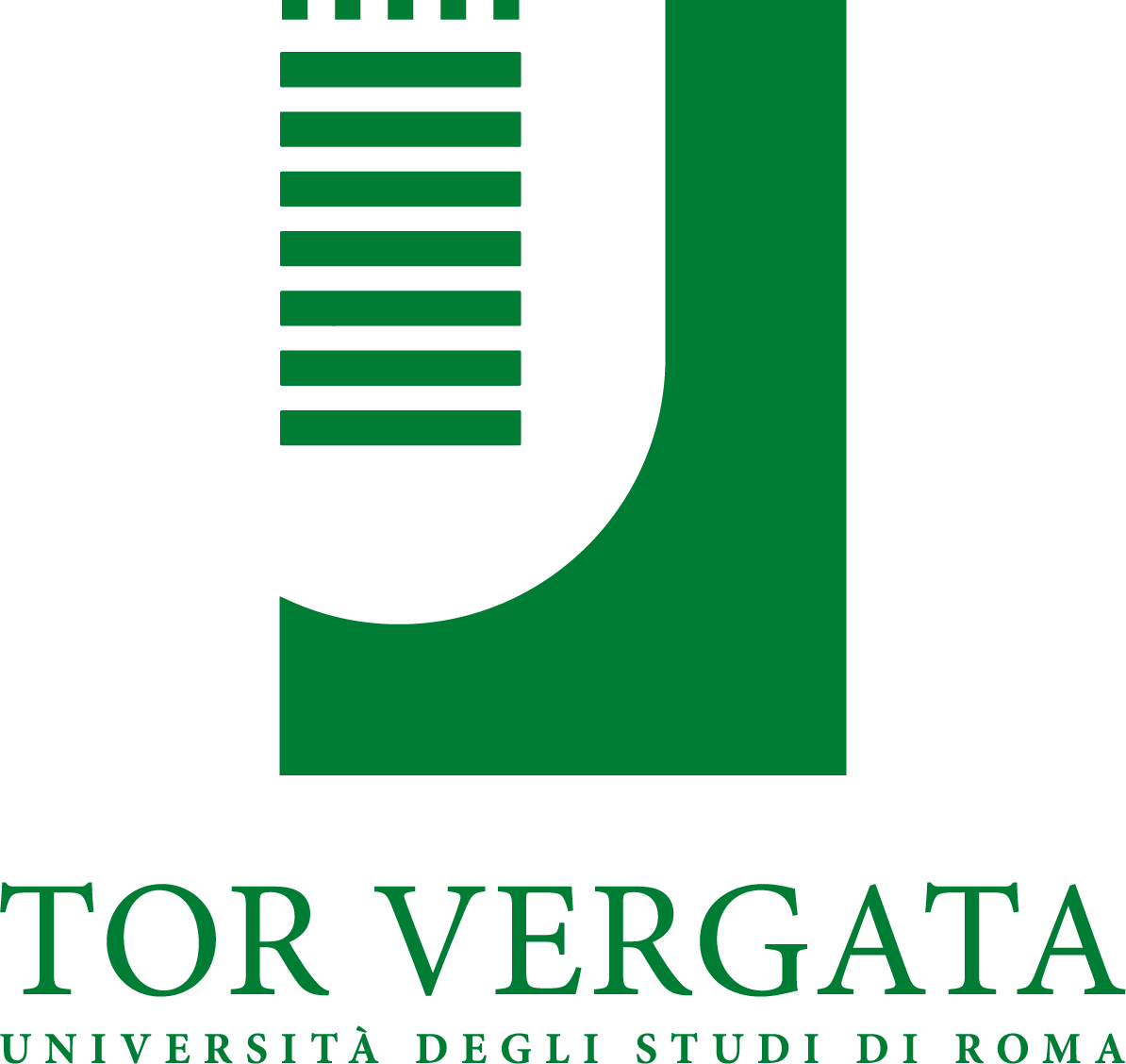Born in Rome 13th 05 1957
Degree in Chemistry (1981), 110/110 cum laude, University of Rome “La Sapienza”, PhD in Biochemistry (1986), University of Rome “La Sapienza”. Since 2001 he is full professor of Plant Physiology, teaching first at the University of Sannio (Benevento, Italy) and from 2007 at the Department of Biology of the University “Tor Vergata” in Rome. He currently teaches Plant Physiology (LT Biology, LM Human Nutrition Sciences) and Plant Growth and Development (LM Molecular and Cellular Biology). He is co-author of about 40 papers on international journals (H index =18). He is a member of the Italian Society of Plant Biology (SIBV), of the Federation of the European Societies of Plant Physiology and of the Italian Proteomics Association (ItPa). Grant reviewer for the Italian Ministry of University and Research (MIUR).
Main collaborations
Prof C. Leonardi Università di Catania
Dr. M Rocco Università del Sannio
Prof. V. Fogliano Università degli Studi di Napoli Federico II
Prof. M. Maffei Università degli Studi di Torino
Financial support
Mauro Marra’s researches received financial support from MURST Italian Ministry of University) , MIPAF (Italian Ministry of Agriculture), PSR Lazio.
Research topics
Proteomic analysis of fruit ripening and quality
Fruit ripening is a key processes in the production of the phytonutrients that are essential for a balanced diet and for disease prevention. The pathways involved in these processes are unique to plants and vary between species. Among fleshy fruits, tomato, apple and apricot are three of the most consumed worldwide. Molecular and genetic analysis of tomato ripening resulted in a significant gain of knowledge but a detailed biochemical profiling of the process is still largely unaccomplished. A deeper understanding of tomato ripening is highly desirable also in view of possible manipulations aimed to improve organoleptic and nutritional features. Tomato industry in the South of Italy has been largely based on S. Marzano ecotype which had become synonymous with excellent taste characteristics. Despite these highly desirable traits, S. Marzano cultivation recently had to confront the introduction of commercial elite varieties, which exhibited better field performances. Hence, understanding the underlying proteomics of fruit maturation, in addition to clarify molecular mechanisms involved, will contribute to define specific molecular markers for the selection of breed varieties maintaining original desirable taste characteristics, while better suited to intensive cultivation. A comparative proteomic investigation of tomato fruits from regional and commercial elite ecotypes during maturation was accomplished. A number of proteins were identified as differentially expressed during maturation. These proteins were associated to important physiological processes such as redox status control, stress, carbon metabolism, energy production and cellular signaling. Different apple cultivars are commonly available for consumers, although over the years only a limited number of elite varieties adapted to modern intensive cultivation, relegating many other cultivars to marginal production. ‘Annurca’ apple is an IGP regional variety cultivated in Campania which produces fruits with peculiar flavour and aromasIt has been demonstrated that flesh of Annurca fruits have a very high content of polyphenols . In a recent characterization of different accessions of Annurca cultivar, in relation to apple elite varieties, the genetic diversity of Annurca germplasm clearly emerged. Integration of genetic data with the actual protein complement is highly desirable and informative for crop breeding and amelioration. A study, concerning the first systematic proteomic analysis of the pseudocarp tissues of Malus x domestica Borkh. cv. Annurca was performed. About fifty proteins related to important physiological processes such as energy production, ripening and stress response were identified. The occurrence of allergens causative of widespread food allergy syndromes was also detected. Production of apricot for different uses, as fresh or processed fruits, is economically very relevant (3210194 MT in 2009, according to FAO data) in the Mediterranean countries and in Italy. Apricot cultivation is hampered by some specific problems, such as high sensitivity to diseases or environmental stresses, insufficient fruit quality or ripeness, as well as restricted harvest period. Hence a better characterization of the ripening process in apricot is highly desirable. To this purpose, a proteomic characterization of fruits of Prunus armeniaca cv. Vesuviana, a regional variety cultivated in the South of Italy and renowned for its peculiar flavor and texture characteristics have been accomplished. Fruits were harvested at three maturation stages and proteins extracted and resolved on 2D gels. A number of protein species differentially expressed as result of ripening state was identified by means of combined 2-DE and MS procedures.
Proteomic analysis of plant response to stress
Plants are in intimate contact with the environment; they are constantly being challenged by unfavourable environmental conditions and other organisms eventually causing physical damages (insects or herbivores) or disease development (pathogenic bacteria and fungi). In order to protect themselves from biotic stresses, plants have evolved different lines of defense mechanisms. Protein phosphorylation is a crucial event for regulation of many processes essential for plant biochemistry and physiology. Increasing evidence indicates that this post-translational modification plays a pivotal role also at different stages of plant response to pathogens, such as signal transduction events, control of the cellular redox status, adjustments to metabolism and accumulation of defense molecules. A study on the main quantitative changes of phosphorylated proteins within Arabidopsis thaliana leaves as result of its challenge with various elicitors or treatment mimicking different biotic stresses, was performed. In particular, plant leaves were treated with chitosan, benzothiadiazole, wounding and methyl viologen. Phosphoproteins from elicited and control plants were enriched by means of metal oxide affinity chromatography and resolved by bidimensional electrophoresis. A comparison of the resulting proteomic maps highlighted phosphoproteins showing quantitative changes induced by elicitors treatment; these components were identified by MALDI-TOF peptide mass fingerprinting and/or nanoLC-ESI-LIT-MS/MS experiments. In total, 97 differential spots, representing 75 unique candidate phosphoproteins, were characterized. They are representative of different protein functional groups, such as energy and metabolism, response to oxidative and abiotic stress, defense, protein synthesis, RNA processing and cell signaling. Ascertained protein phosphorylation found a positive confirmation in available Arabidopsis phosphoproteome database. Our results suggest a partial overlapping of the responses to the different elicitors or treatments, as well as a communication with key cellular functions by imposed stresses. Low and high temperature extremes are among the most common stresses that hamper plant growth and limit crop productivity. Response of plants to low temperatures is modulated by environmental parameters like duration and intensity of the challenge. In many plants, while a gradual exposure to moderately low temperatures for a sufficiently long time brings about an adaptation response known as acclimation , which involves an extensive genetic and metabolic reprogramming, short time exposure to a more severe cold challenge triggers a rapid response whose biochemical features are only partially overlapping with those of acclimation. Plant response to fast temperature drops has been poorly investigated. Accordingly, a proteomic characterization of the molecular mechanisms underlying fast cold changes is still fragmentary, whereas It is known that short term chilling induces rapid structural and metabolic changes, like alteration of membrane composition or synthesis of stress-protecting metabolites and/or proteins, processes that can be predominantly regulated at the post-transcriptional level. Heat stress has a severe impact on crop productivity, and the gradual increase in the ambient temperature observed in the last decades enhances its economic impact on a global scale. Heat has an adverse effect on both vegetative growth and reproduction of plants. At molecular level, temperature raise can have either structural effects, altering protein, membrane and cytoskeleton stability, as well as metabolic ones, due to alteration of enzyme activities, which in turn result in accumulation of toxic metabolites, i.e. reactive oxygen species (ROS). A comparative proteomic study of the protein changes associated to fast response to temperature extremes has been performed in Arabidopsis. After exposing seedlings to short-term (6 h), low (4°C) or high (42°C) temperature, proteins from rosette leaves were extracted and resolved by 2D E and resulting proteomic patterns were compared to control. Differently-represented components were identified by means of combined MS experiments. Thirty-eight protein spots exhibited significant quantitative changes in at least one stress condition. Identified, differentially-represented proteins belonged to two main broad functional groups, namely energy production/carbon metabolism and response to abiotic and oxidative stress. Our results suggest a significant overlapping of the responses to opposite temperature extremes.
Biological activities of plant secondary metabolites
Dietary phytochemicals are a rich sources of different classes of plant secondary metabolites (phenolics, terpenes, alkaloids) showing a number of beneficial effects to human health. Particularly, rosemary (Rosmarinus officinalis L) has been widely used in the Mediterranean area since ancient times, both as a culinary spice, in order to preserve food or improve its taste, as well as in folk medicine as a medicinal herb. Nowadays rosemary extracts, in various formulations, are increasingly exploited by the alternative medicine or by the functional food industry, due to their benefits on human health. In fact, traditional medicine used rosemary for centuries to cure various disorders, i.e. as antispasmodic in renal colic or dysmenorrhea, as a relief for respiratory disorders and as smooth muscle relaxant, while in more recent years, a growing body of experimental investigation confirmed the pharmacological potential of rosemary, expanding also the range of its possible therapeutic applications. A growing body of evidence indicates that rosemary exerts anticancer effects on various in vitro and in vivo model systems and that different cellular mechanisms may be involved. We have undertaken an integrated investigation, aimed to test and analyze the effect of hydroalcoholic extracts from regional varieties of rosemary on melanoma cancer cells. Antiproliferative, anti or pro oxidant activity, effect on cell cycle as well as proteomic analysis of induced protein changes and HPLC characterization of extract composition are at present under progress.
Recent publications
Rocco M., Arena S., Renzone G., Scippa GS., Lomaglio T., Verrillo F., Scaloni A. and Marra M. (2013) Proteomic analysis of temperature stress-responsive proteins in arabidopsis thaliana rosette leaves. Molecular Biosystems. 9: 1257-1267.
Trupiano D., Di Iorio A., Montagnoli A., Lasserre B., Rocco M., Scaloni A., Marra M., Chiatante D. and Scippa GS. (2012) “ Involvement of lignin and hormones in the response of woody poplar taproots to mechanical stress”. Physiol. Plantarum. 146: 39-52
D’Ambrosio C., Arena S., Rocco M., Verrillo F., Novi G., Viscosi V., Marra M. and Scaloni A. (2012) “Proteomic analysis of apricot fruit during ripening”. J. Proteomics. 78: 39-57.
Huang C., Verrillo F., Renzone G., Rocco M., Scaloni A. and Marra M. (2011) “Response to biotic and oxidative stress in arabidospis thaliana: analysis of variably phosphorylated proteins”. J. Proteomics. 74: 1934-1949.
Corrado G., Agrelli D., Rocco M., Marra M. and Rao M. (2011) “Systemin-inducible defenses against pests are costly in tomato”. Biol. Plantarum. 55: 305-311.
Visconti S., Camoni L., Marra M. and Aducci P. (2008). “Role of the 14-3-3 C-terminal region for interaction with the H+-ATPase”. Plant Cell Physiol. 49 : 1887-1897.
Rocco M., Corrado G., Arena S., D’Ambrosio C., Tortiglione C., Sellaroli S., Marra M., Rao R., and Scaloni A. (2008). “The expression of tomato prosystemin gene in tobacco plants affects host proteomic repertoire”. Journal of Proteomics 71: 176-185.
Guarino C., Arena S., De Simone L., D’ambrosio C., Santoro S., Rocco M., Scaloni A. and Marra M.(2007) “ Proteomic analysis of the major soluble components in annurca apple flesh” Mol. Nutr. Food Res. 51: 255-262.
Sottocornola B., Visconti S., Orsi S., Gazzarrini S., Giacometti S.,Olivari C, Camoni L., Aducci P., Marra M., Abenavoli A., Thiel G. and Moroni A. (2006) “ The potassium channel KAT1 is activated by plant and animal 14-3-3 proteins “ JBC. 281 (47:35735-35741.
Rocco M., D’Ambrosio C., Arena S., Faurobert M., Scaloni A. and Marra M.(2006) Proteomic analysis of tomato fruits from two ecotypes during ripening” Proteomics, 6: 3781-3791.
Camoni L., Marra M., Garufi A., Visconti S. and Aducci P. (2006) “The maize root plasma membrane H+-ATPase is regulated by a sugar-induced transduction pathway” Plant Cell Physiol. 47 (6): 743-747.






Università di Tor Vergata